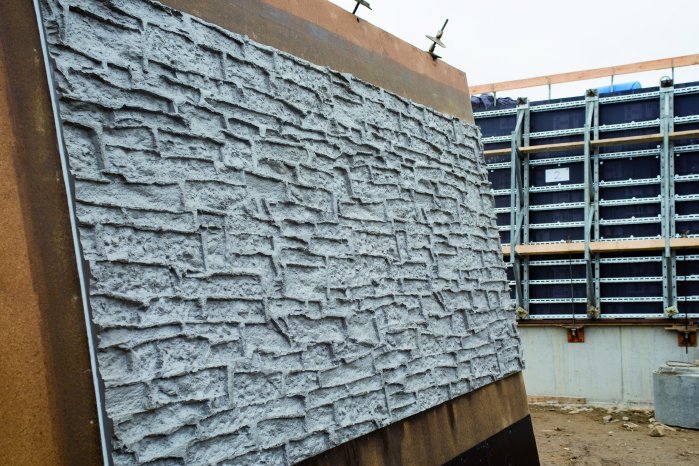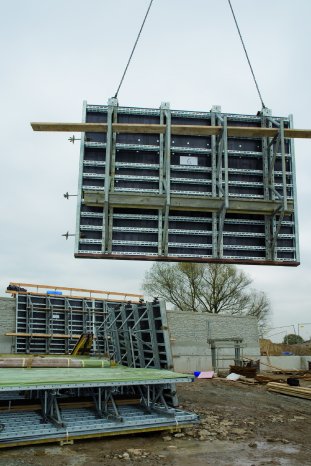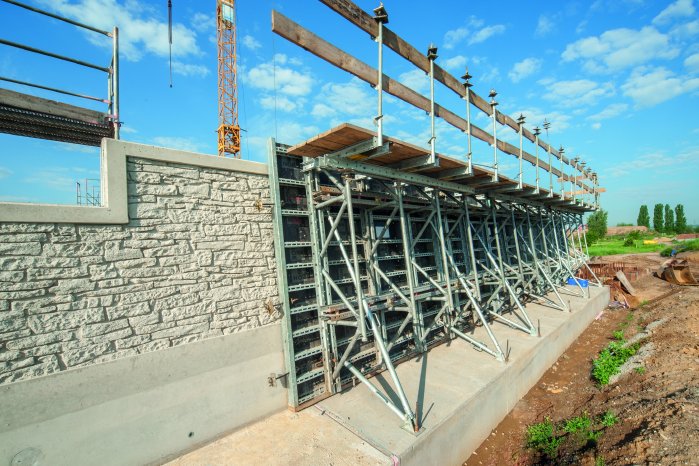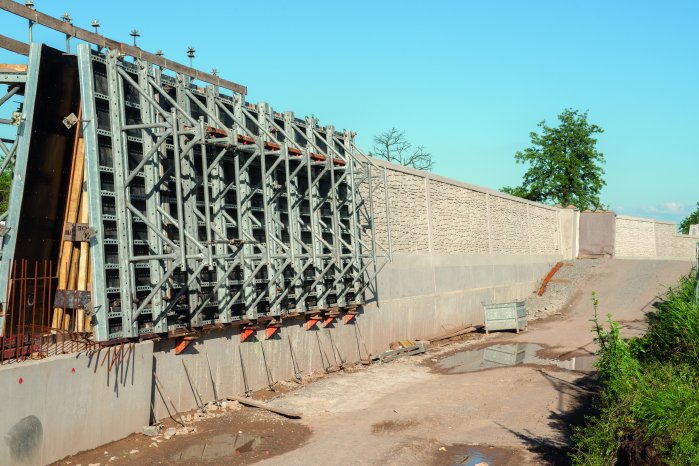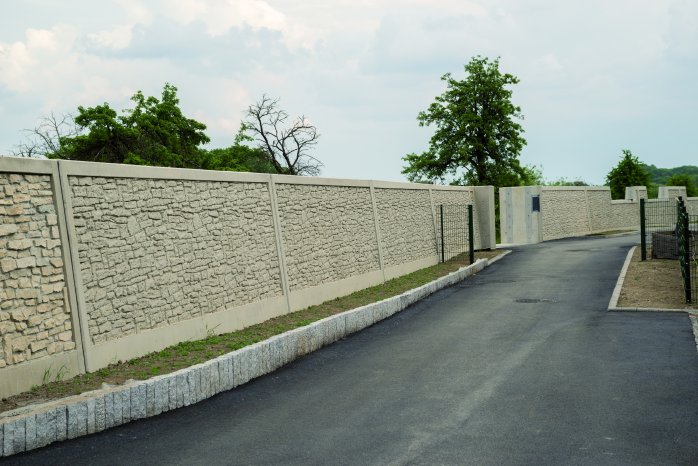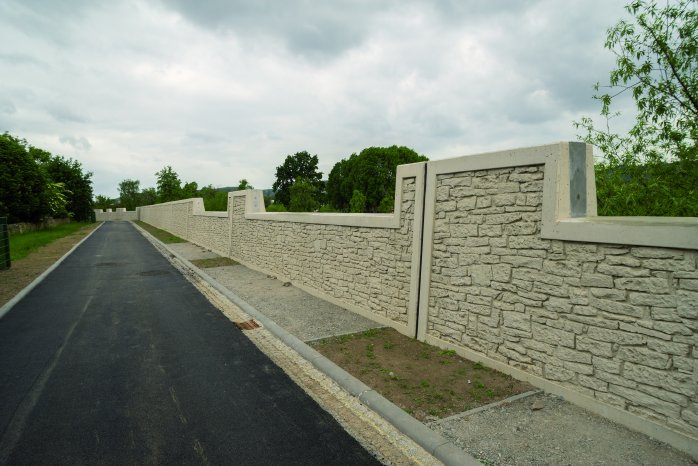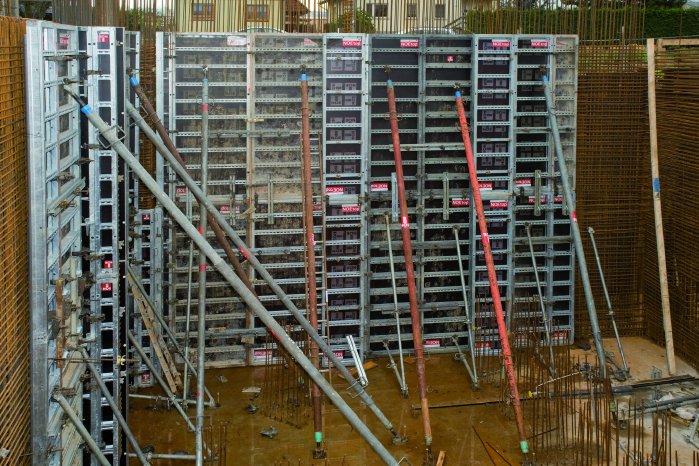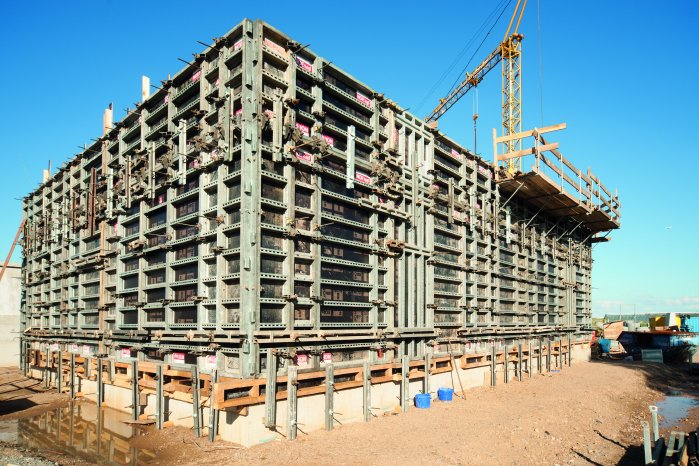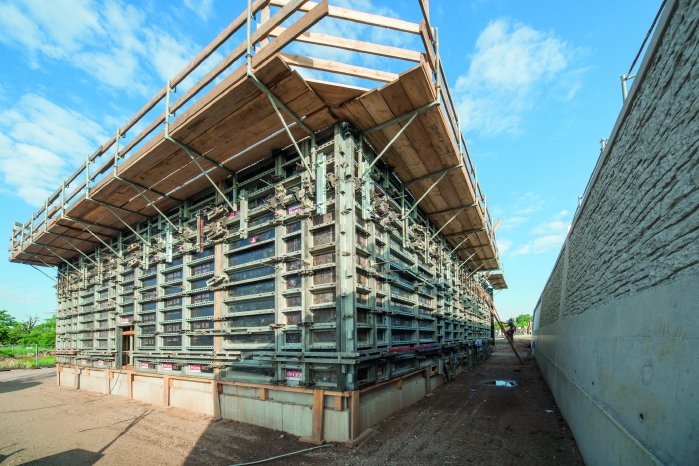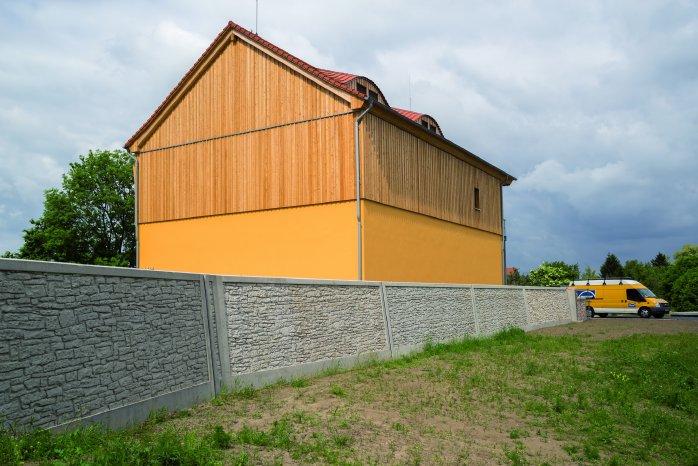Dresden, the capital of Saxony, lies on the Elbe and is also known as the "Florence of the Elbe" because of its wealth of art and high-quality architecture. During the floods of 2002, 2006 and 2013, however, many parts of the city looked more like Venice: countless streets, some of them quite a distance from the banks of the Elbe, stood under water and it was impossible to reach the houses without getting your feet wet. Cellars were flooded, works of art endangered and buildings damaged. In the worst year, 2013, the water level reached a record height of 9.40 m. This was reason enough for a new flood prevention system to be designed for the city.
Cossebaude
Part of this system is the dyke currently being built north-west of Dresden, in the district of Cossebaude. It is being constructed by Otto-Heil GmbH & Co. KG from Taucha. At a height of approximately 11 m above the national reference datum, the dyke is designed to be higher than the level of a 100-year flood. Because the dyke wall projects nearly 2 m out of the ground and will affect the look of the river bank over a length of 890 m, the decision was made to give the wall an attractive appearance, which was to be achieved with the help of NOEplast textured formliners.
These formliners can be either placed into the formwork (precast concrete) or glued onto it (in-situ concrete). Then follows the concreting. As soon as the concrete has sufficiently hardened, the forms are struck and the chosen texture revealed. In the case of the dyke wall at Cossebaude, the choice fell on the "Murus Romanus" texture. It is one of the standard textures in the NOE-Schaltechnik range and gives the observer the impression that the wall is made from natural stone masonry.
The manufacturer also offers customers the possibility of realising their own individual motifs, so that they can always create an appearance in accord with any language of architecture.
A further advantage of the formliners: they can be used up to 100 times, which makes them extremely efficient. These advantages came in very useful for the team at the dyke construction site. Following the arrangement concept developed by NOE, they required only 185 m² of formliner for a formed surface of approximately 3,700 m² and managed to reuse the NOEplast textured formliners up to 26 times.
NOE service
To progress the works quickly, the contractor took advantage of a service that only NOE can provide as a single company manufacturing and supplying both formwork and textured formliners: on request, NOE undertakes the job of attaching the textured formliners to supporting boards and installs them on the basic formwork surface, all ready for use. The advantage for the contractor is that he has only to erect the already assembled elements and can therefore begin preparing for the concrete pour without losing any time. This service from NOE is finding use more and more often, above all on in-situ concrete sites.
However, at Cossebaude the service from NOE went considerably further: the manufacturer's team worked out a special formwork concept and performed all the formwork panel utilisation planning on behalf of the contractor. A task that proved to involve considerably more work than it would appear at first glance. The 2.78 m high wall is conical, narrowing towards the top. At the foot, the wall is 100 cm wide, while at the crown the width is only 40 cm. To add to the complexity, the wall has many sharp changes in direction and several 60 cm deep stepped-down sections of the crown to provide views for the local residents.
This meant: to build the structure using 34 different segment types required only six standard forms, which were augmented by three optimally designed special system solutions and used in various combinations to suit the wall geometry and casting sequence.
NOE Combi 70
The specification called for no tie bars in the visible areas of the wall, a stipulation that was perfectly fulfilled by using NOE Combi 70. This formwork system is stiffened by 70 cm deep galvanised lattice girders spaced between 100 and 150 cm apart to suit the loading, and can resist high concrete pressures. The actual formwork element consists of a grillage of multi-hole channels and vertical NOEtop edge profiles attached to a 21 mm thick basic panel facing. Any type of liner for creating fair-faced concrete surfaces can be applied and screwed on to the opposite face. The special aspects of this system: ties are required only at the top and bottom ends of the lattice girders. On the dyke wall at Cossebaude, this had the advantage that the ties were only 10 cm above the base and approximately 290 cm above the top of the wall. No cosmetic filling of tie rod cone holes in the surfaces produced by the textured formliners was necessary. All the assembled formwork panels, which had the formliners and smooth facing attached at the factory and included all the special solutions, were delivered to site by NOE's Cottbus branch. The panels were a maximum size of 300 x 512.5 cm, so that e.g. 9.60 m long wall segments could be concreted using only four formwork panels. The joints between the panels are hardly noticeable.
One detail in particular concerning the close working relationship between the contractor and the formwork supplier should not go unmentioned: after the trial section of wall was constructed, working in conjunction with the site management team NOE developed a special release spindle for use on the Combi 70 system, which was integrated into the plinth area of all the panels. This ensured a particularly gentle stripping of the highly textured fair-faced concrete surfaces.
Further cooperation
The service NOE provided through its Cottbus branch, even during the preparations for this project, impressed the staff at Otto-Heil GmbH & Co. KG so much that they decided to build the two 3-storey pump houses at the start and end of the dyke in cooperation with the formwork manufacturer. The NOEtop formwork system was used to form the 5,200 m² of concrete.
This is a steel frame formwork system for constructing walls. It can resist concrete pressures of up to 88 kN/m² and, as a tried and tested system, is very easy to assemble. This system was able to bring all the advantages, e.g. of its well-designed selection of panels, to bear on this building at Cossebaude, with its disjointed wall geometry, many stiffening piers and intermediate walls, some with haunches, and the various storey heights of 6.40 to 4.16 m. Thus it was possible to reduce the residual areas to be specially formed to a minimum.
Each storey was concreted in five steps. As both pump buildings were the same as far as their construction was concerned, the site operatives used the formwork units in one building before moving them to the next. The flood prevention wall and the two pump houses involved approximately 7,000 m³ concrete (of which approx. 2,000 m³ were for the bored piles). By using a well-designed special formwork and a flexible formwork system, Otto-Heil GmbH & Co. KG was able to construct the complex flood prevention system very efficiently, achieving the objective of reliably protecting Dresden's population and the surrounding communities from future floods.

